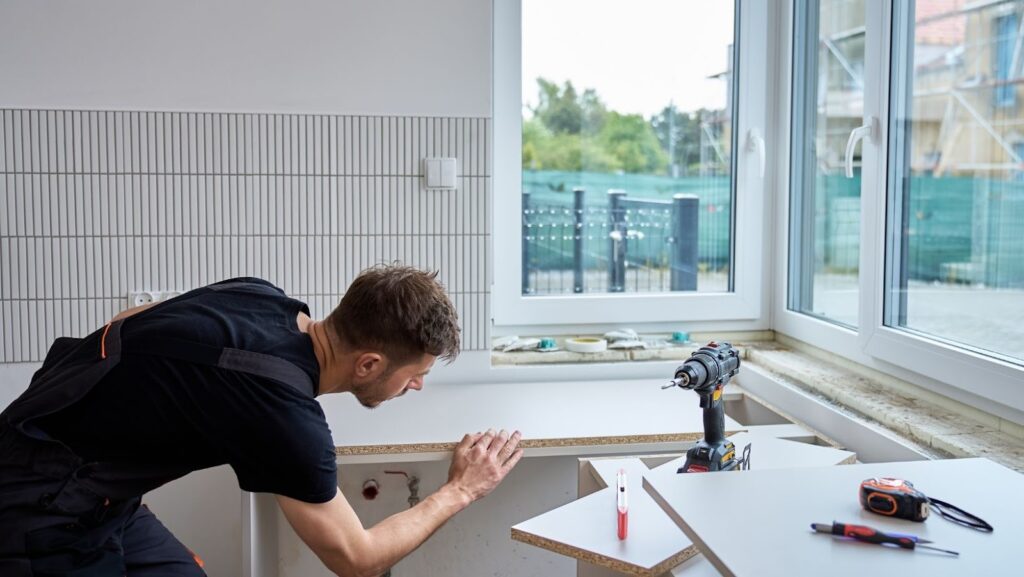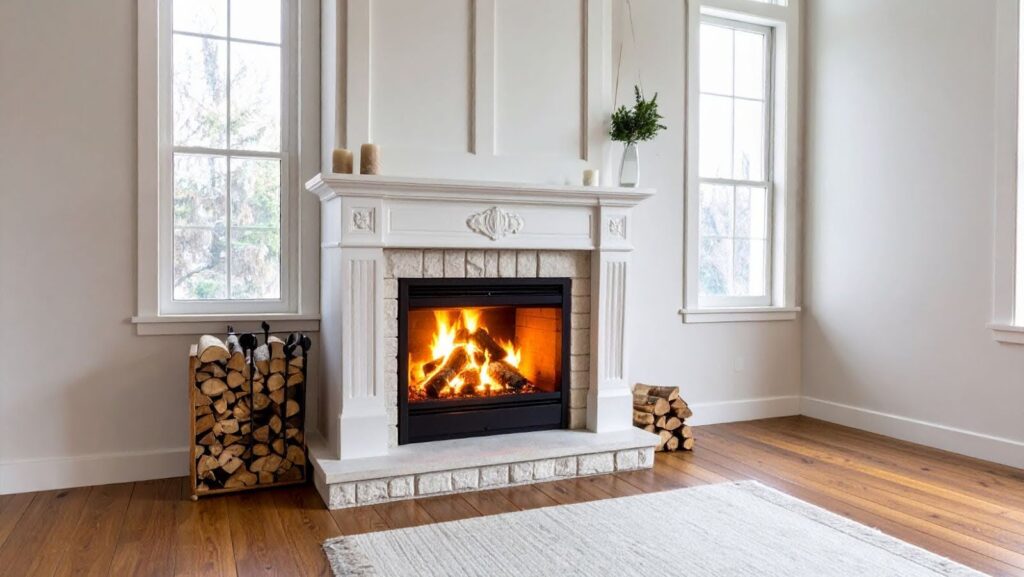There’s something about a wood stove that transforms a house into a home. Beyond the obvious warmth it provides, a well-designed wood stove installation creates a focal point that brings family and friends together. But getting from the idea to a functioning, code-compliant system requires more than just picking out a stove you like. The chimney system matters just as much as the stove itself, and understanding how these components work together will save you time, money, and potential headaches down the road.
The Reality of Wood Heat in Contemporary Living
Wood stoves have come a long way from the cast iron boxes that heated our grandparents’ homes. Today’s models combine efficiency ratings that would have seemed impossible a generation ago with designs that complement modern interiors. We’re talking about stoves that extract 80% or more of the available heat from wood, controlled combustion systems that reduce emissions, and aesthetic options ranging from traditional to sleek contemporary.
The appeal goes beyond nostalgia. With energy costs continuing their upward trend, adding wood heat gives you flexibility. You’re not entirely dependent on the grid or the gas company. You have options when utility bills spike or when the power goes out during a winter storm. There’s also the satisfaction of managing your own heat source, selecting and seasoning your fuel, and maintaining a skill that’s both practical and increasingly rare.
But here’s where many homeowners stumble. They focus entirely on the stove and treat the chimney system as an afterthought. That’s a mistake. Your chimney pipe system is what makes the stove work safely and efficiently. Get it wrong, and you’ll deal with poor draft, creosote buildup, smoke spillage, or worse.
Understanding Your Chimney Pipe Options
When you’re planning a wood stove installation, you’ll encounter terms like single wall pipe, double wall pipe, and insulated chimney pipe. These aren’t interchangeable, and building codes specify where each type can be used.
Single wall stove pipe connects your stove to the chimney system. It’s the least expensive option and radiates heat into your living space, which sounds good until you realize it also requires substantial clearances from combustible materials. We’re talking 18 inches in most cases. That’s a lot of space in a room.
Double wall stove pipe includes an air gap between inner and outer walls, which reduces clearances to combustible materials. This makes it easier to position your stove where you want it without creating fire hazards. The outer wall stays cooler, making it safer in tight spaces.
When the pipe exits your home or runs through unconditioned spaces, insulated chimney pipe becomes necessary. This is typically Class A chimney pipe, engineered to handle the full range of temperatures a chimney experiences while protecting surrounding structures. It includes at least an inch of insulation between inner and outer walls, maintaining flue gas temperature to ensure proper draft and minimize creosote formation.
The transition from stove pipe to Class A chimney pipe happens at a specific point determined by code and your installation configuration. You can’t extend stove pipe through a wall or ceiling. That transition requires proper components and careful attention to clearances and support.
Planning Your Installation Strategy
Before you purchase anything, you need a clear plan. Walk through your space and consider where the stove will sit, how the pipe will route to the exterior, and what structural modifications might be necessary.
Will you go straight up through the roof or out through a wall? Straight up installations often provide the best draft because warm gases rise naturally without directional changes. But they also mean cutting through your ceiling and roof, creating penetrations that must be properly sealed and flashed.
Wall exits can be simpler in some situations, especially in single story homes or rooms on upper floors. The chimney then runs up the exterior of your house. This keeps most of the pipe outside your living space, which means less heat radiated indoors but also less visual impact inside. Exterior chimneys need extra attention to insulation and support, especially in cold climates where temperature differentials are significant.
Measure everything carefully. Count the number of elbows or offsets you’ll need. Every directional change slightly reduces draft efficiency, so minimizing bends helps performance. Consider how you’ll support the pipe at required intervals. Class A chimney pipe needs support at least every few feet, and specific brackets and braces are manufactured for this purpose.
Think about access for future cleaning and inspection. Chimneys need annual inspection and cleaning when creosote buildup warrants it. Your system should include clean-out tees or caps that allow brush access to the entire flue length.
Components That Make the System Work
A complete chimney pipe system includes more than just pipe sections. You’ll need ceiling support boxes or wall thimbles where pipe passes through structures. These maintain required clearances and prevent heat transfer to framing and other combustible materials.
Roof flashing and storm collars seal the penetration where chimney pipe exits through your roof. These components must be properly installed and sealed to prevent water intrusion, which damages not only your chimney system but also your home’s framing and interior.
Rain caps keep precipitation out of your flue while allowing smoke to exit. Mesh screens on these caps also prevent birds and small animals from nesting in your chimney, a surprisingly common problem that can completely block your flue.
Adapters transition between different pipe types and sizes. Your stove likely has a specific flue collar diameter, and your chimney pipe might be a different size. Reducers and increasers make these connections while maintaining proper flow characteristics.
For a comprehensive selection of these components, including various pipe diameters and configurations, Chimney Pipes offers options designed for residential installations across different stove types and settings.
Installation Considerations and Code Compliance
Building codes exist for good reasons, especially when fire safety is involved. Your local jurisdiction may require permits for wood stove installation, and inspections at various stages ensure work meets safety standards. Don’t skip this process. If something goes wrong and you didn’t follow code, insurance companies can deny claims.
Clearances to combustible materials are specified in code and in your stove’s manual. These aren’t suggestions. They’re minimum safe distances determined through testing. You can reduce some clearances with approved heat shields, but this also follows specific requirements about air gaps and shield materials.
Chimney height matters for draft. As a general rule, your chimney should extend at least three feet above the point where it exits the roof and at least two feet higher than any roof surface within ten feet horizontally. This prevents downdrafts and ensures smoke disperses above your roofline.
Foundation or support for floor-mounted stoves must be non-combustible and extend beyond the stove’s footprint by specified dimensions. This typically means a hearth pad made of brick, stone, tile, or manufactured hearth board. The pad protects your floor from radiant heat and from embers that might fall during loading.
Making It Work in Your Design
One concern homeowners often express is how industrial chimney pipe will look in their carefully designed spaces. The reality is that exposed chimney pipe has become an accepted, even celebrated, design element in many contemporary homes. That black pipe running from a modern steel stove through a living area makes a statement about authenticity and function.
If that aesthetic doesn’t work for you, there are options. Chases can enclose exterior chimney sections, creating a more traditional look. Inside, you can incorporate the pipe into millwork or use it as a visual divider between spaces. Some homeowners paint pipe sections to match or contrast with wall colors, though you must use high-temperature paint rated for chimney applications.
The stove itself becomes furniture in a sense. Position it to define a seating area or to serve as a room divider in an open plan. Consider the view from different angles. You’ll spend time watching the fire, so position seating to take advantage of the glass door view while maintaining safe clearances.
Storage for firewood becomes part of the design too. Built-in wood storage near the stove keeps fuel handy while adding texture and visual interest. Just remember to maintain clearances and never stack wood against the stove or chimney pipe.
Living With Wood Heat
Once your system is installed and approved, using it effectively takes some learning. Wood needs to be properly seasoned, meaning dried for at least a year after cutting. Burning wet or green wood creates excessive creosote, reduces heat output, and can damage your stove.
Building and maintaining fires is a skill. You’ll learn how much air to allow for startup versus steady burning, how to load wood for overnight burns, and when to add fuel. Modern stoves give you considerable control through air intake adjustments, allowing you to moderate heat output to match your needs.
Maintenance includes regular ash removal, annual chimney inspection, and cleaning when needed. Some people burn exclusively hardwoods and might go multiple years between chimney cleanings. Others burning softer woods or operating their stoves at lower temperatures might need annual cleaning. An inspection tells you what’s necessary.
You’ll also develop an appreciation for wood itself. Different species burn differently. Dense hardwoods like oak and maple provide long, steady heat. Softwoods like pine ignite easily but burn faster. Managing your wood supply, rotating stock, and keeping it dry becomes part of the rhythm of living with wood heat.
The Investment Perspective
Wood stove installations aren’t cheap, but they’re also not as expensive as many people assume. A quality stove might cost $2,000 to $5,000. Chimney pipe and components add $1,000 to $3,000 depending on complexity and height. Professional installation ranges widely based on local rates and job specifics, but budget $1,500 to $4,000 for labor if you’re not doing it yourself.
That total investment pays back through reduced heating costs, increased home value, and energy independence. How quickly depends on your local wood costs, your previous heating bills, and how much you rely on the wood stove as a primary versus supplemental heat source.
Many homeowners find that even when they’re not saving substantial amounts on energy bills, the quality of life improvement justifies the cost. There’s comfort in wood heat that forced air systems simply don’t provide. The radiant warmth feels different. The visible fire creates ambiance that central heating never will.
Moving Forward With Your Project
If you’re seriously considering adding a wood stove to your home, start with research. Talk to neighbors or friends who heat with wood. Visit showrooms to see stoves in person and discuss your specific situation with knowledgeable staff. Many building supply stores that carry stoves also stock chimney components and can help you understand what you’ll need.

Consider hiring a professional chimney installer or certified wood stove specialist for at least a consultation. They can assess your space, identify potential challenges, and help you develop a realistic plan and budget. Some installations are straightforward DIY projects for handy homeowners. Others involve complexities better left to professionals.
The result, when done right, is a heating system that serves you for decades while adding character and value to your home. That combination of practical benefit and aesthetic appeal is rare in home improvements. Wood stove installations deliver both, creating warmth in every sense of the word.


More Stories
Does Building an ICF Pool Cost Less Than Traditional Methods?
How to Identify When Your Floor Can Be Recoated vs Fully Sanded
Solar Canopies as Architectural Statements in Urban Courtyards